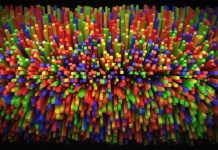MURF AI, an acronym for Multimodal Unified Representation Learning Framework, is an innovative approach to artificial intelligence that aims to integrate and leverage multiple modalities of data for enhanced representation learning. Unlike traditional AI models that primarily focus on single-modal data such as text or images, MURF AI is designed to handle complex, multimodal data sources simultaneously. By combining information from different modalities, MURF AI can capture richer and more comprehensive representations of the underlying data, leading to improved performance across a wide range of tasks.
1. Multimodal Representation Learning:
At the heart of MURF AI lies the concept of multimodal representation learning, which involves learning meaningful representations from data that span multiple modalities, such as text, images, audio, and video. MURF AI adopts a unified framework for jointly processing and integrating these diverse data sources, allowing for seamless information fusion and knowledge extraction. This holistic approach enables MURF AI to capture the inherent relationships and correlations between different modalities, leading to more robust and contextually rich representations.
2. Unified Learning Architecture:
MURF AI features a unified learning architecture that is capable of accommodating various types of data modalities within a single computational framework. This architecture is designed to be flexible and scalable, allowing for the incorporation of new modalities and the adaptation to different application domains. By unifying the learning process across multiple modalities, MURF AI can exploit complementary information from different data sources, leading to more comprehensive and nuanced representations.
3. Cross-Modal Fusion Techniques:
A key component of MURF AI is its cross-modal fusion techniques, which enable the integration of information from different modalities at various levels of abstraction. These fusion techniques may include early fusion, where raw data from different modalities are combined at the input level, or late fusion, where high-level features extracted from each modality are merged at a later stage. By employing sophisticated fusion strategies, MURF AI can effectively leverage the complementary strengths of each modality, leading to improved performance on downstream tasks.
4. Applications in Natural Language Processing:
MURF AI has numerous applications in the field of natural language processing (NLP), where it can leverage multimodal data sources such as text, images, and audio to enhance language understanding and generation tasks. For example, in sentiment analysis, MURF AI can combine textual data with associated images or audio recordings to gain a more nuanced understanding of the sentiment expressed in a given piece of text. Similarly, in machine translation, MURF AI can utilize multimodal data to improve translation accuracy and fluency.
5. Advancements in Computer Vision:
In the realm of computer vision, MURF AI offers novel approaches to image and video understanding by incorporating textual or contextual information from other modalities. For instance, in image captioning, MURF AI can generate more descriptive and contextually relevant captions by integrating textual descriptions with visual features extracted from images. Similarly, in video summarization, MURF AI can leverage both visual and textual cues to identify key moments or events in a video sequence.
6. Enhanced Multimedia Analysis:
MURF AI has significant implications for multimedia analysis tasks, such as content-based image retrieval, audio classification, and video content understanding. By jointly modeling multiple modalities, MURF AI can improve the accuracy and robustness of multimedia analysis systems, enabling more effective search, recommendation, and organization of multimedia content. For example, in content-based image retrieval, MURF AI can utilize textual annotations or tags to refine search results and retrieve more relevant images.
7. Cross-Domain Knowledge Transfer:
One of the key advantages of MURF AI is its ability to facilitate cross-domain knowledge transfer by leveraging representations learned from one modality to enhance performance in another modality. This transfer learning capability allows MURF AI to generalize across different data domains and adapt to new tasks with limited labeled data. For example, representations learned from textual data in a language modeling task can be transferred to improve performance on a related image classification task, and vice versa.
8. Real-World Applications:
MURF AI has a wide range of real-world applications across various domains, including healthcare, finance, e-commerce, and entertainment. In healthcare, MURF AI can integrate patient records, medical images, and clinical notes to support diagnosis, treatment planning, and disease monitoring. In finance, MURF AI can analyze multimodal financial data to identify market trends, detect anomalies, and make investment decisions. In e-commerce, MURF AI can personalize product recommendations based on user preferences inferred from textual reviews, images, and browsing history. In entertainment, MURF AI can enhance user experiences in gaming, virtual reality, and augmented reality applications by synthesizing immersive audiovisual content.
9. Challenges and Future Directions:
While MURF AI holds great promise, it also faces several challenges and opportunities for future research. These include developing more efficient and scalable fusion techniques, addressing issues of data heterogeneity and modality imbalance, exploring novel architectures for multimodal representation learning, and advancing techniques for unsupervised or weakly supervised learning from multimodal data. Additionally, there is a need for benchmark datasets and evaluation metrics to facilitate fair comparisons and reproducibility across different multimodal learning approaches.
10. Ethical and Societal Implications:
As with any AI technology, MURF AI raises important ethical and societal considerations, particularly regarding privacy, bias, and fairness. The integration of multiple modalities of data may introduce new challenges related to data privacy and security, as well as the potential for unintended biases or stereotypes to be propagated through multimodal representations. It is essential for researchers and practitioners working with MURF AI to address these concerns proactively and ensure that the technology is developed and deployed in a responsible and ethical manner.
MURF AI’s multimodal representation learning framework offers a holistic approach to data analysis, allowing for the simultaneous processing of diverse data types such as text, images, audio, and video. By capturing the interdependencies and correlations between different modalities, MURF AI can extract richer and more nuanced representations of the underlying data, leading to improved performance on various machine learning tasks. The unified learning architecture of MURF AI facilitates seamless integration of multiple modalities, enabling efficient information fusion and knowledge extraction. This unified approach eliminates the need for separate models or pipelines for each modality, streamlining the learning process and reducing computational overhead.
In natural language processing (NLP) tasks, MURF AI’s ability to leverage multimodal data sources opens up new avenues for language understanding and generation. By incorporating contextual information from images, audio, or video into language models, MURF AI can enhance the semantic richness and contextual relevance of textual output. This integration of multimodal cues enables more accurate sentiment analysis, entity recognition, and machine translation, among other NLP tasks. Similarly, in computer vision applications, MURF AI’s cross-modal fusion techniques enable more robust image understanding and video analysis by incorporating textual or contextual information. This integration of textual or contextual information enables more accurate image classification, object detection, and scene understanding, among other computer vision tasks.
Real-world applications of MURF AI span diverse domains, including healthcare, finance, e-commerce, entertainment, and more. In healthcare, MURF AI can facilitate data-driven decision-making by integrating patient records, medical images, and clinical notes to support diagnosis, treatment planning, and disease monitoring. In finance, MURF AI can analyze multimodal financial data to identify market trends, detect anomalies, and make investment decisions. In e-commerce, MURF AI can enhance user experiences by personalizing product recommendations based on multimodal data such as textual reviews, images, and browsing history. In entertainment, MURF AI can create immersive audiovisual experiences in gaming, virtual reality, and augmented reality applications by synthesizing multimodal content.
Despite its significant potential, MURF AI also faces several challenges and opportunities for future research. These include developing more efficient and scalable fusion techniques, addressing issues of data heterogeneity and modality imbalance, exploring novel architectures for multimodal representation learning, and advancing techniques for unsupervised or weakly supervised learning from multimodal data. Additionally, there is a need for benchmark datasets and evaluation metrics to facilitate fair comparisons and reproducibility across different multimodal learning approaches.
Ethical and societal considerations are also paramount in the development and deployment of MURF AI. The integration of multiple modalities of data may introduce new challenges related to data privacy, security, and fairness. It is essential for researchers and practitioners working with MURF AI to address these concerns proactively and ensure that the technology is developed and deployed in a responsible and ethical manner. By addressing these challenges and leveraging its capabilities, MURF AI has the potential to drive innovation and unlock new possibilities across industries, ultimately reshaping the future of artificial intelligence.
In summary, MURF AI represents a cutting-edge approach to multimodal representation learning, with broad implications for a wide range of applications across industries. By integrating and leveraging information from multiple modalities of data, MURF AI enables more comprehensive and nuanced understanding of complex real-world phenomena, leading to improved performance on a variety of tasks. As research in multimodal representation learning continues to advance, MURF AI is poised to play an increasingly important role in driving innovation and shaping the future of artificial intelligence.






















